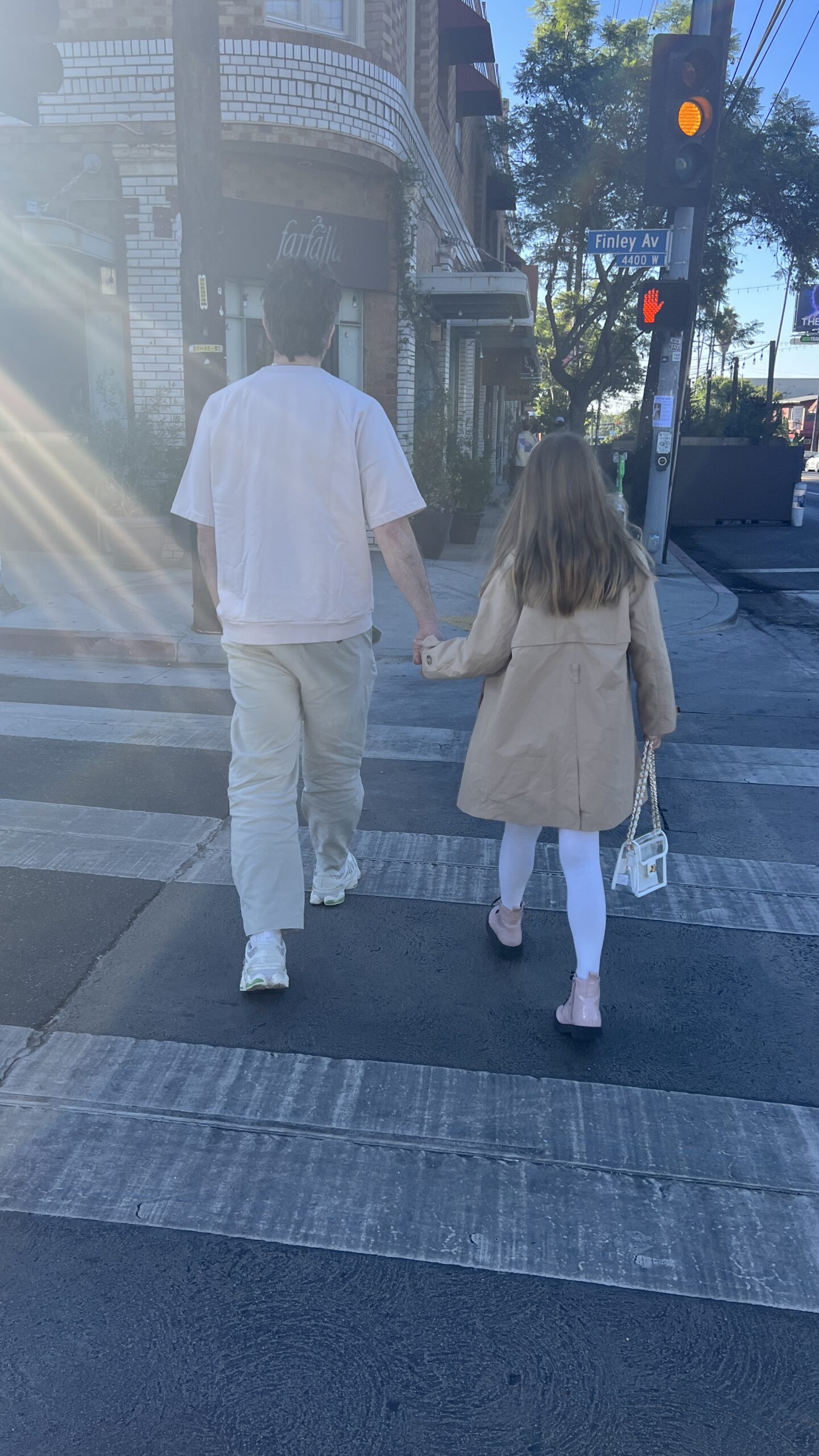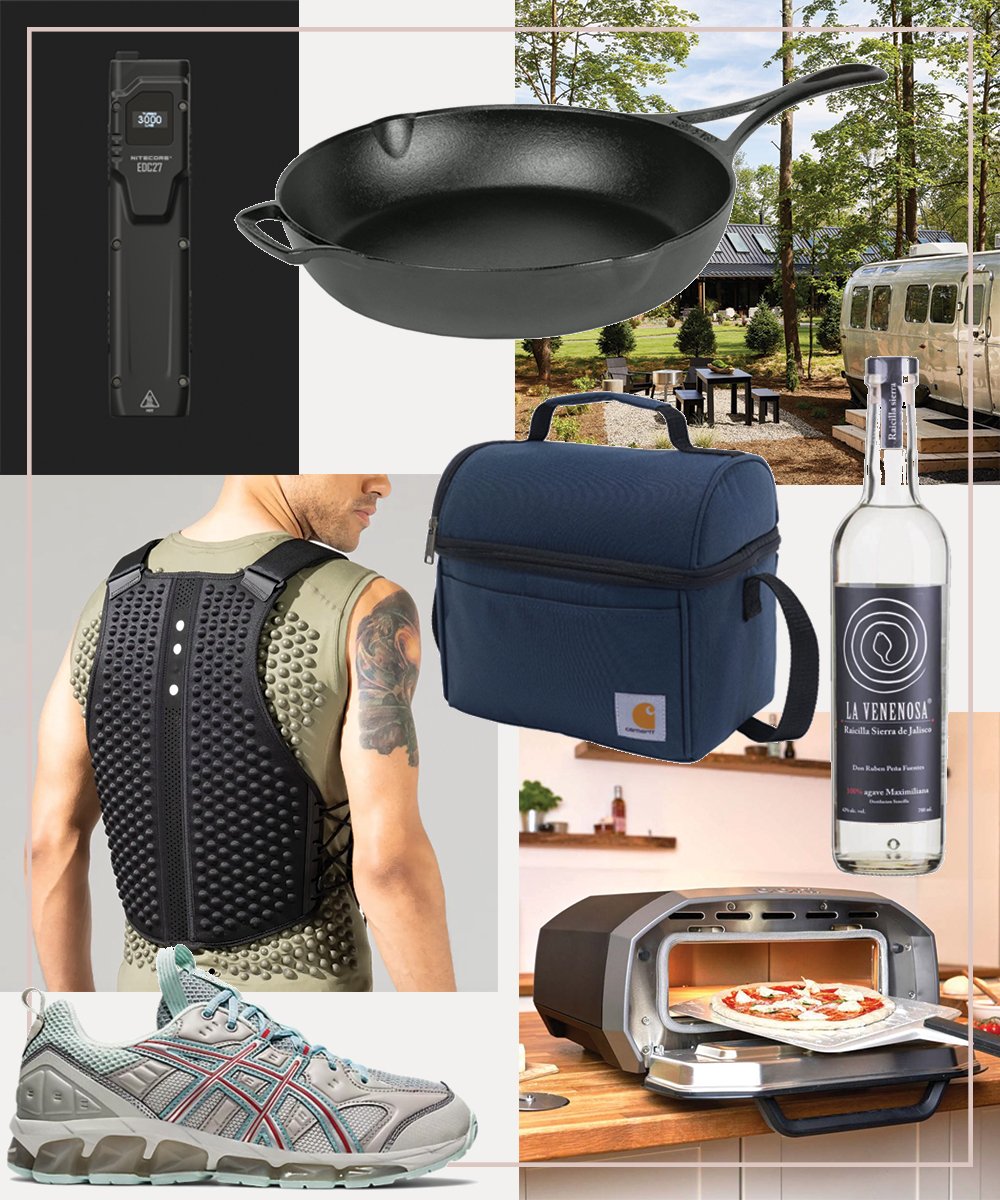
“In a fire, especially one that ignites in your home, you have about two minutes to evacuate. What would you grab?”
I was sitting in a friend’s backyard at an emergency preparedness class when the founder of the new brand, Judy, asked us this question. Around me, friends answered with everything from the nostalgic (photographs) to the strategic (passports). The correct answer, it turns out, falls somewhere in the middle. You should have a bag that’s always packed with all of the above, not only with your important documents (birth certificate, passport, social security card) and printed copies of each, but also mementos. The key to surviving a disaster is being prepared, which a lot of people simply aren’t—myself included, at the time.
They told us that in the case of hurricanes and tornadoes, where people are given five-minute warnings, they often find bodies under collapsed rubble, frozen with their phones in hand. Similarly, there’s FBI footage of mass shootings showing people standing still, unable to move or hide. While I went into the class without many expectations, I left with a new appreciation for being prepared. Here are the biggest takeaways—not all of the takeaways—I learned in preparing for an emergency:

The purpose of Judy, named because the founders like that it sounds like a “responsible female friend,” is to prepare and educate people for natural disasters and emergencies. A key part of that is their kit (think of it as a Marie Kondo’d emergency bag), though, of course, you can absolutely create your own following the tips included below. This isn’t, by any means, a comprehensive list of everything you should have in your kit (you can find that here), but rather some of the highlights I found most useful for creating a kit:

A lot of emergency preparedness comes down to having a clear plan. In your kit, you want to have a binder full of important documents, credit cards, and copies of everything (you can also have them encrypted on a flash drive, but keep in mind that during a massive catastrophe, you may not have access to your phone or Google Drive). You also want to write down your address (in an emergency, you may forget it) and other important phone numbers, like that of your neighbors’ or family members’ in case you don’t have access to your phone.
One of the things that made my stomach drop is that you’re advised to have a printed-out current photo of your kid(s). If you get separated and run out of phone battery, you need to be able to provide a photo of what they look like to hospitals and shelters. Basically: Print everything.

Once you create your kit, set calendar reminders to update it every six months (Judy does this automatically by sending you new items). Change out batteries and switch out nearly expired food, medications, and contacts. The Judy team recommends using Daylight Saving Time as a built-in reminder to rotate your kit every six months.

You can go days without food, but you can’t do the same without water. In the event of a crisis, water may be unavailable from taps or sold out in stores—it suddenly becomes incredibly hard to find, so you want to be prepared. You should have about a gallon of water per person per day—and don’t forget to include animals. Our host said that she picks up a gallon or so whenever she remembers to add to her stockpile. And never store plastic bottles on concrete as the concrete can seep into the bottles.
They also suggested buying a water sterilizer, like this one, so you can drink from tanks if you have to. For food, they recommend having things like dried fruit and unsalted nuts on hand—you don’t want to eat anything that could contribute to dehydration.

You should keep cash in your kit—and ask your bank for small bills, since businesses may not be able to break something like a hundred-, fifty-, or even twenty-dollar bill.

If a disaster strikes in the middle of the night, you may not have time to grab your full kit. Keep running shoes, a fire extinguisher, and a flashlight there, as well as in your car, so you can get out safely. In the case of a flashlight, consider keeping the batteries in it upside-down so they don’t drain before you have to use it.
Some other things you may want are: Solar generators (you don’t need to light up your entire house, but 15 watts should give you enough energy to charge your phone and your refrigerator) and a battery- or crank-operated radio for emergency broadcasts.

Here are a few tips I learned for things to do before an emergency, so you’re (mostly) ready if it comes.

Once you develop a home evacuation plan (for fires, natural disasters, an intruder), you should practice it. You typically have about two minutes to get out, so time yourself on how long it takes to grab your kids and pets, your prep bag, and get out of the house—then ask yourself if you can shorten it.
You always want to have three options for meet-up spots in the event of an evacuation: a first (usually your home), a second (a park or office), and a third pick that’s further away and out of your city or even state. Schools are a good option, but keep in mind that they’re often designated evacuation zones and may already be filled with kids.

In the event of an earthquake, it can be more difficult to get to someone within the affected area than outside of it, so designate an out-of-state family member you can all call. For example, if an earthquake happened in Northern California (excuse me while I go knock on some wood), I may not be able to contact my parents, but they may be able to reach an out-of-state relative that I could then call to learn if they’re safe.
It’s also worth noting that texts have a higher likelihood of going through than calls do—always text in an emergency.

I flatline frequently, but it’s a stupid thing to do. During some of the recent fires in California, people were stuck in their cars for as many as six hours trying to flee—the last thing you need is to run out of gas.

Many gas lines now shut off automatically in the event of an earthquake, but you should also know where it is ahead of time to avoid gas leaks and fires after the shaking stops. Also, be sure you know how to use a fire extinguisher. They gave us the acronym: PASS (pull, aim, squeeze, sweep). You want to engage it, then sweep at the base of a fire.
If you have a garage or gate, learn how to open them manually in case there’s no electricity.

Even if you have insurance, consider taking a walking video through your house and noting the value in each room, which can help after the disaster in receiving your allotted insurance money.

Of course, the specifics of emergencies change dramatically from case to case, but there are a few things you can do to improve your chances of survival.

One of the biggest takeaways I took from the entire class was to have situational awareness. Be aware of your surroundings at all times—so if you’re in a movie theater, concert venue, or even a restaurant, take note of where all the exits are. When you check into a hotel room, read the map for fire exits. If a fire occurs, you may find yourself crawling along a dark, smoky hallway in the middle of the night. You want to know exactly where to go and how to get out.

One of the founders asked what we would do if we were in a movie theater and an active shooter came in. We pretty much all said some variation of, “Crouch down and hide.” And that’s true of most people—the instinct is to freeze. But, be a runner. If you’re crouched in a ball, you’re an easy target. It’s much harder to hit a moving target, and you’re safe as soon as you get out of the situation.
In speaking about active shooters at schools (a reality I hate to think about, but an important one to prepare for), they suggested telling kids to look for “firefighters or mommies and daddies with other kids,” rather than cops. The police will likely be most concerned with disengaging the shooter, not helping a four-year-old who’s lost.
In order of priority for survival, they said to: Run, hide if you can’t run, and fight only if absolutely necessary.

In the event of a disaster, when friends are calling to check in on you, they might not be able to reach you directly, but may be able to reach your outgoing voicemail. You could say something along the lines of, “Hi, you’ve reached me and I’m safe after the earthquake. If you need to reach me, please call [out-of-state contact’s information].” Leslie told me that after the Boston Marathon bombing, so many people were making calls in the area, she couldn’t make any calls or texts for hours while her parents nervously waited to hear if she was okay (which she thankfully was!).

Something I found incredibly uplifting, sitting in my friend’s home, was the idea that you should find comfort in your community. I looked around the room and knew that these were the people I would want to be with, so we selected nearby meeting spots where we could gather together in an emergency. Make plans not only with your family, but also with friends and neighbors.

I had my first anxiety attack when I was around eight-years-old, after watching a school PSA video about a kid getting lost. I remember hearing about fires, quicksand, and getting lost in a forest, understanding them all, at the time, as equally likely possibilities. I didn’t know how to process such horrific information. For a long time, I avoided discussing emergencies with Sloan altogether, but there are some ways to have these conversations productively.
The first thing to do is discuss emergencies in a way that feels informed, not scary. It helps to ask them questions about what they’ve heard. You can say, “Tell me, what do you think would happen in an earthquake?” and then correct any false assumptions. A question I wish adults had asked me was, “How does this conversation make you feel?” so that I could have voiced my concerns rather than internalize them. Of course, you don’t want to have any conversations that aren’t age-appropriate, but kids as young as elementary school are now told by teachers about active shooters, which would have terrified me. Loop the conversation around so that they feel empowered and in control, with a solid plan of action. Ask them if they have any questions, and then quiz them. Say, “Okay, so what would you do if the house started shaking right now?” The goal is for them to walk away feeling confident, rather than afraid.







